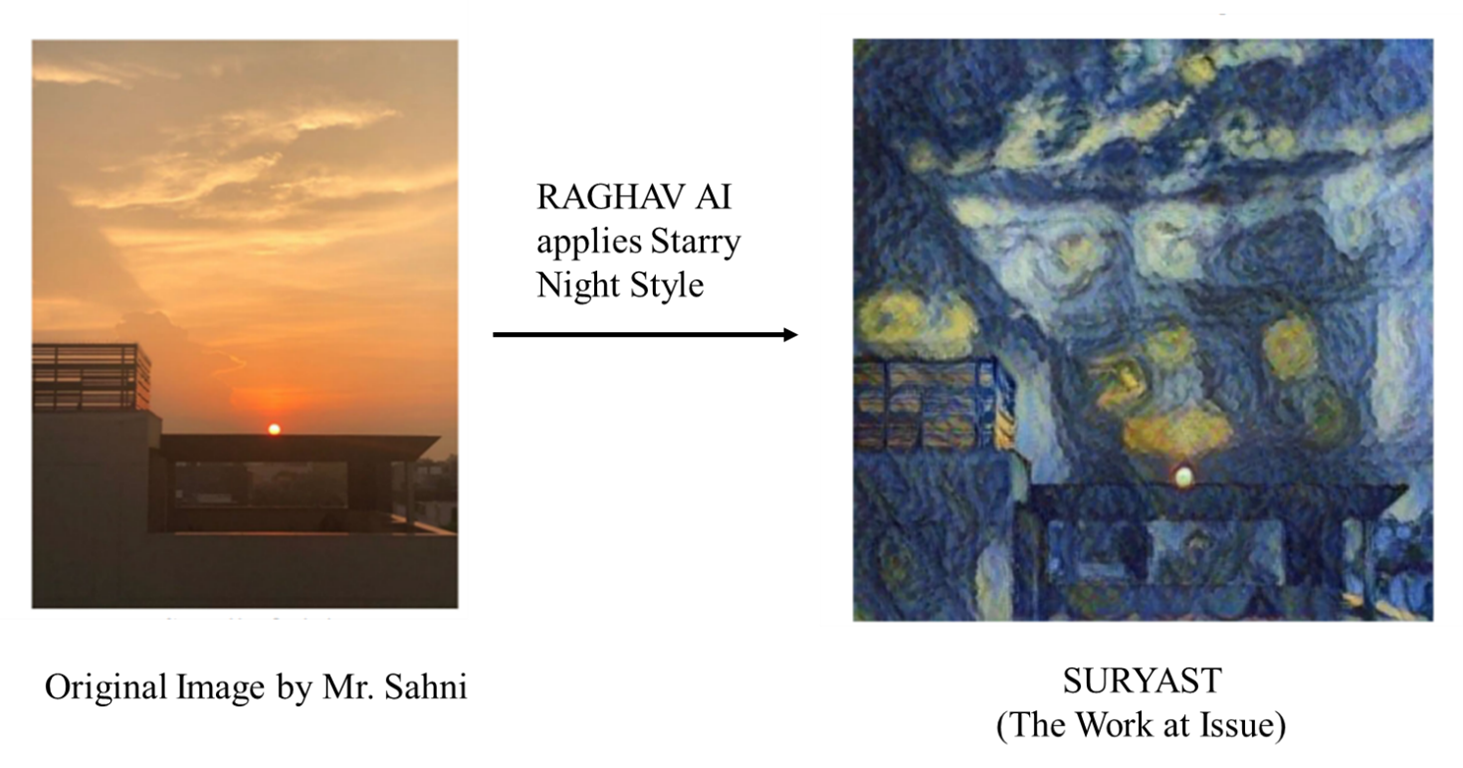The US Copyright Office Review Board rejected a request to register artwork made using an artificial intelligence (AI) painting application, finding that the applicant “exerted insufficient creative control” over the application’s creation of the work. Second Request for Reconsideration for Refusal to Register SURYAST (Copyright Review Board, Dec. 11, 2023) (Wilson, Gen. Counsel; Strong, Associate Reg. of Copyrights; Gray, Asst. Gen. Counsel).
Ankit Sahni filed an application to register a claim for a two-dimensional artwork titled “SURYAST.” The work was generated by inputting a photograph Sahni had taken into an AI painting app called “RAGHAV.” Sahni describes RAGHAV as an “AI-powered tool” that uses machine learning to “generate an image with the same content as a base image, but with the style of a chosen picture.” In this case, Sahni took a photograph of a sunset and applied the style of Vincent van Gogh’s The Starry Night to generate the image at issue:

In the application, Sahni listed himself as the author of “photograph, 2-D artwork” and RAGHAV as the author of “2-D artwork.” Because the application identified an AI app as an author, the Copyright Office registration specialist assigned to the application requested additional information about Sahni’s use of RAGHAV in the creation of the work. After considering the additional information, the Copyright Office refused to register the work because it “lack[ed] the human authorship necessary to support a copyright claim.”
Sahni requested that the Copyright Office reconsider its initial refusal to register the work, arguing that “the human authorship requirement does not and cannot mean a work must be created entirely by a human author.” Sahni noted that in this case, the AI required several human inputs such as selecting and creating the base image, selecting the style image and selecting a variable value that determined the strength of the style transfer. He argued that the decisions he made in generating SURYAST were sufficient to make him the author of the work, which meant that the work was the product of human authorship and therefore eligible for copyright protection. Sahni minimized the role of RAGHAV, calling it an “assistive tool” that merely “mechanically” applies “colors, shapes and styles, as directed.”
The Board disagreed, finding that Sahni’s input to RAGHAV was insufficient to make SURYAST a product of human authorship. The Board reasoned that while Sahni did provide the original image and selected the style and a “variable value determining the amount of style transfer,” Sahni was not actually responsible for “determining how to interpolate the base and style images in accordance with the style transfer value.” Furthermore, Sahni did not control where the stylistic elements would be placed, what elements of the input image would appear in the output or what colors would be applied. The Board concluded that Sahni’s selection of a single number for the style filter was “the kind of de minimis authorship not protected by copyright.”
Practice Note: This denial is consistent with the Copyright Office’s previous record of denying copyright protection to works created using generative AI and lacking sufficient human authorship. In previous decisions, the Copyright Office has denied copyright protection to AI generated images via Midjourney for a graphic novel and to a painting generated via Midjourney.
#BBD0E0 »



 />i
/>i


